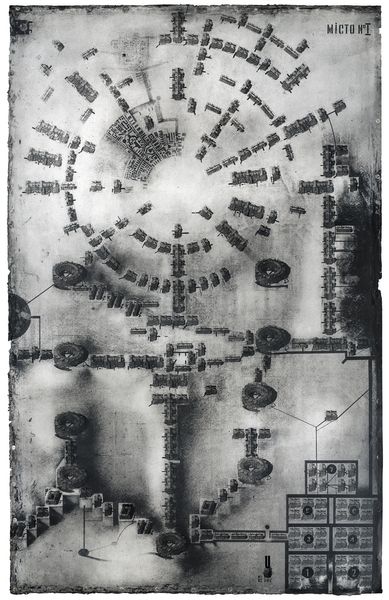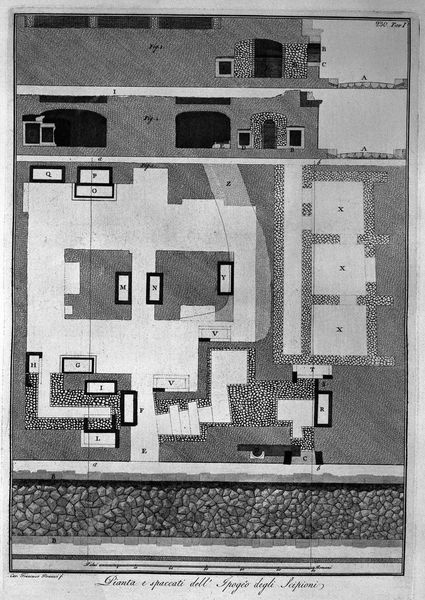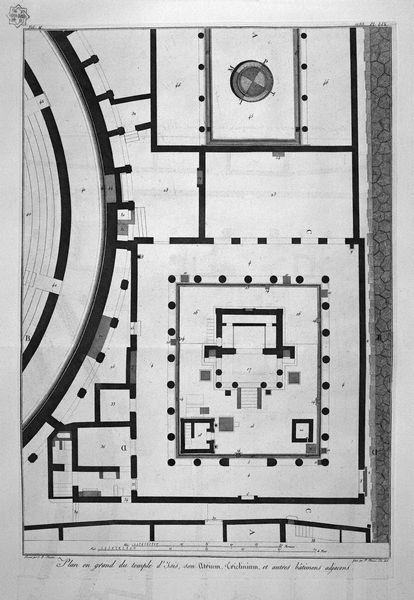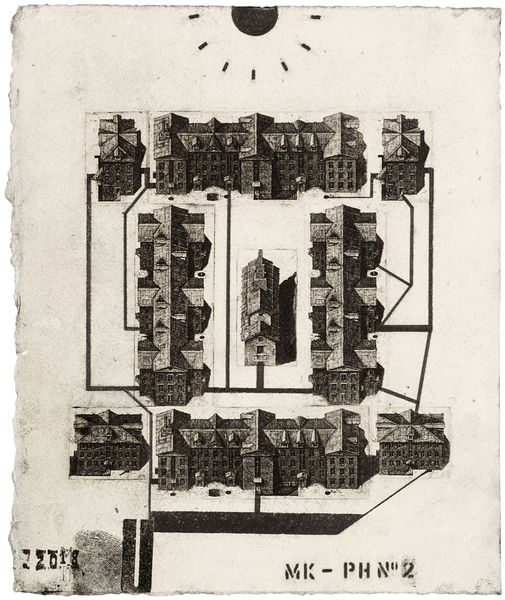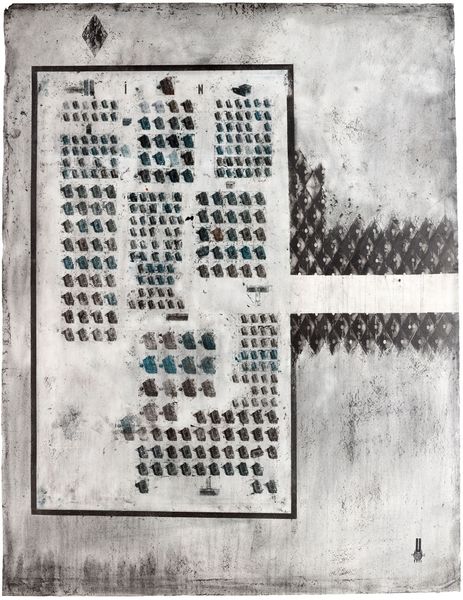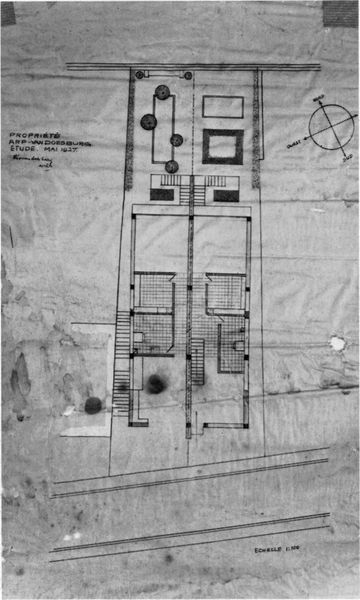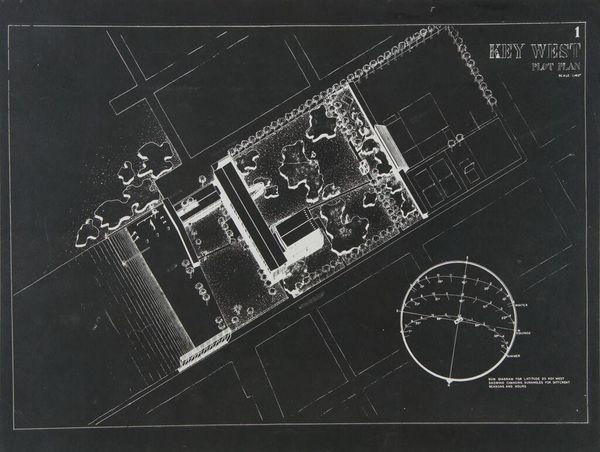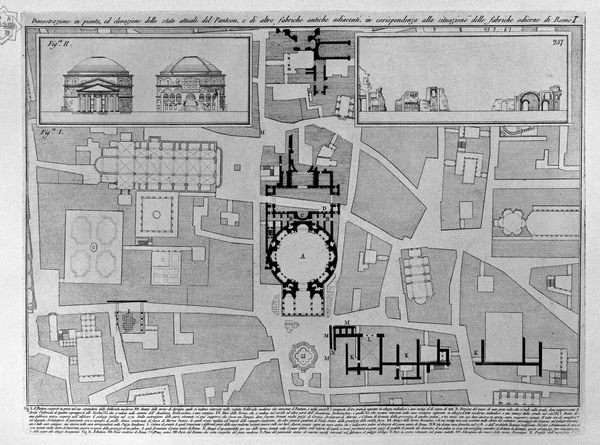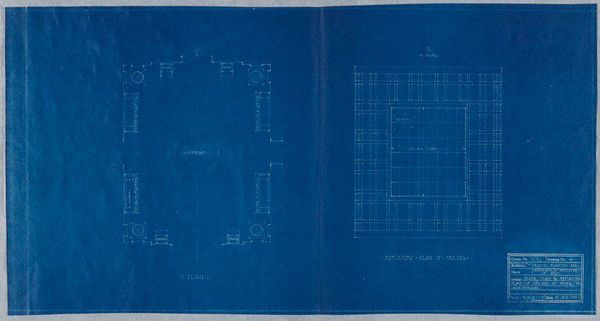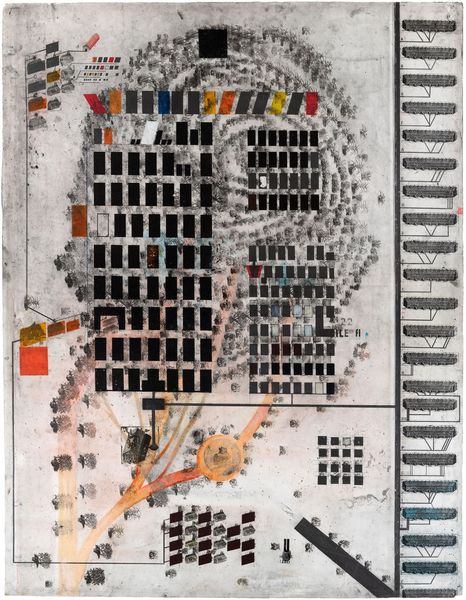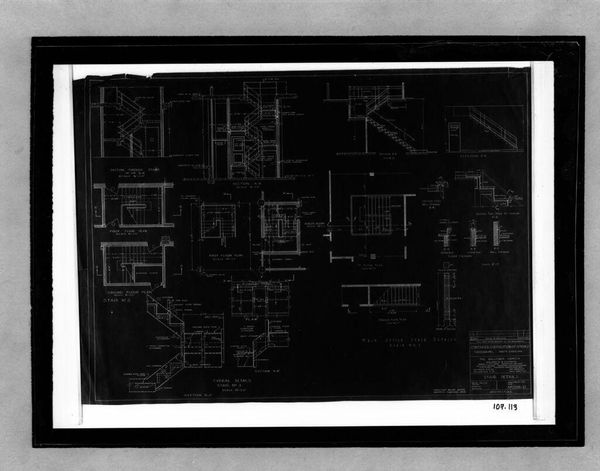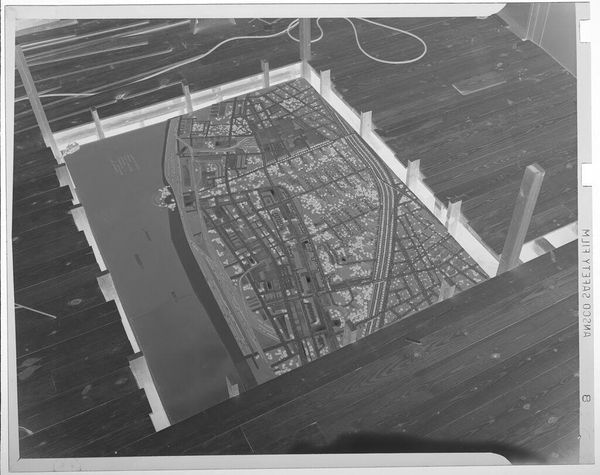
drawing, mixed-media, architecture
#
architectural sketch
#
architectural and planning render
#
drawing
#
mixed-media
#
architectural landscape
#
architectural modelling rendering
#
architectural plan
#
architectural photography
#
geometric
#
architecture model
#
abstraction
#
architectural drawing
#
architecture drawing
#
architectural proposal
#
modernism
#
architecture
Dimensions: 152 x 120 cm
Copyright: Pavlo Makov,Fair Use
Curator: "A page from Abracadabra 2," a mixed-media drawing by Pavlo Makov from 2020. It presents a rather unsettling and stark aerial perspective, don’t you think? What's your take on it? Editor: It reminds me of some sort of master plan or urban design proposal... It’s aesthetically pleasing, but also has an imposing quality to it. What do you see in it? Curator: It's compelling how Makov presents these repeating architectural forms as if mapped onto a landscape. The work resonates with larger themes about urbanization, control, and perhaps even surveillance, right? How does this imagery, especially given the title "Abracadabra," relate to contemporary political theory in your eyes? Editor: Well, "Abracadabra" suggests a sense of transformation or illusion. The architectural structures, rigidly laid out, might hint at the illusion of control within urban spaces. Do you see a commentary on power dynamics embedded here? Curator: Absolutely. I believe Makov prompts us to consider how seemingly ordered systems – represented by the architectural layout – can conceal underlying power structures and social inequalities. The modernist style employed in this image seems fitting, don't you agree, given its history being interwoven with now somewhat failed Utopian ideas on social reform through architecture? Editor: That's interesting. It seems the charm or ‘magic’ of architecture, can also enforce control, right? The contrast between the drawing's aesthetic appeal and the rigid structures makes that tension particularly visible, if you factor in Modernism and its legacy. Curator: Exactly. And it challenges us to look critically at the environments we inhabit and their potential impacts on individual freedom. We see an unsettling juxtaposition of elements that really gets us thinking. Editor: This has definitely provided me with a new lens through which to view seemingly abstract artworks. It's clear that looking at political implications is central to grasping the entire piece. Curator: Indeed. Considering the historical and social contexts is essential, even if it’s an abstract notion like the politics of architecture. It helps uncover those complex narratives woven into art.
Comments
No comments
Be the first to comment and join the conversation on the ultimate creative platform.

